Pulitzer Prize-winning photographer David Turnley will be in Goa for the first edition of the Goa International Photo Festival on February 10. He talks about covering bloody wars and his therapeutic stay in Dharamsala with the Dalai Lama
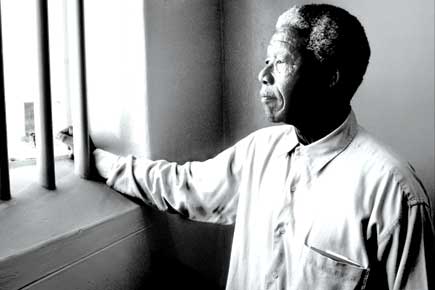
Nelson Mandela visits the Robben Island cell, where he spent 19 years in prison, in 1994
They say a picture is worth a thousand words. But talk to Pulitzer Prize-winning documentary photographer David Turnley and you realise that even this oft-quoted phrase has its exceptions.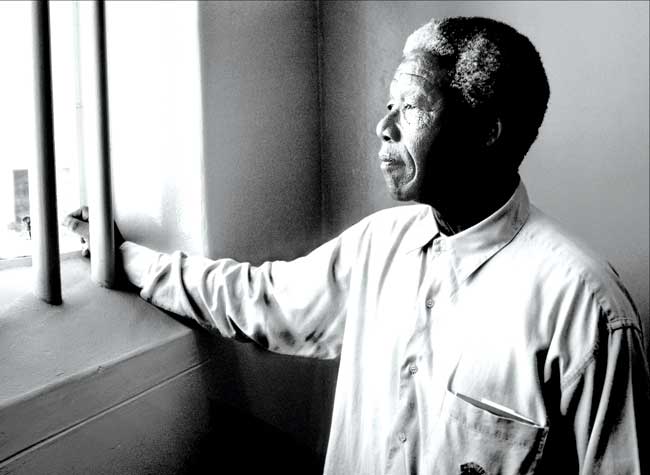
Nelson Mandela visits the Robben Island cell, where he spent 19 years in prison, in 1994. Pics Courtesy/David Turnley
ADVERTISEMENT
His descriptions of past assignments — which include the Gulf War, revolutions in Eastern Europe, the Tiananmen Square protests, Indira Gandhi's funeral and the Rwandan genocide among others — are evocative.
Much like his award-winning photographs, his words bring you closer to the frenzied cheers of half a million people in South Africa when Nelson Mandela walked a free man in 1990 after spending 27 years in jail.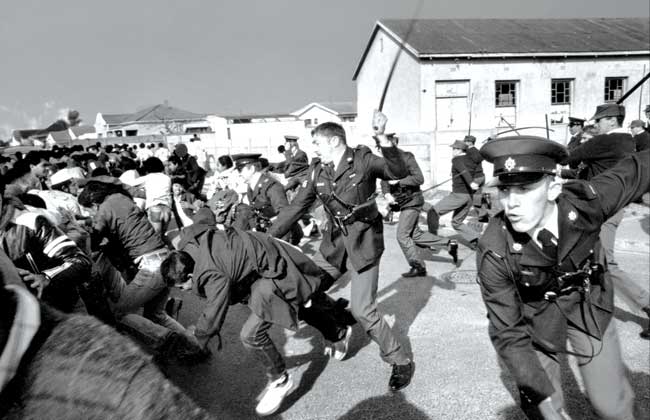
Officers dispersing people by whipping in South Africa
You almost hear the cries of a two-year-old boy, stuck to the side of his father's corpse, and feel the morbidity of those mornings when cholera-stricken refugees were too ill to carry the bodies of their children who had died in their sleep in genocide-ravaged Rwanda. You also smell the smoke that spiralled from a riot-hit Delhi in 1984.
And, tremble from the shelling in Chechnya during the war which could have killed Turnley, had he not moved from the spot due to a mysterious twitch in his neck.
Being at the warfront
Born in 1955 in Fort Wayne, Indiana, Turnley joined the Detroit Free Press in 1980. He was stationed at South Africa from 1985 and 1987 which was still under the Apartheid rule.
The Berlin Wall in 1989 during the revolution
The assignment (Turnley is no fan of the word — he explains it was much more than an 'assignment') saw him photograph Nelson Mandela (or 'Madiba' as he calls him) and the family for almost 30 years.
He remembers the ease with which Mandela struck up conversations with the shyest people in a room — like the domestic help or chauffeurs. "Madiba maintained direct eye contact with the person he spoke to and treated everyone with respect," recalls Turnley.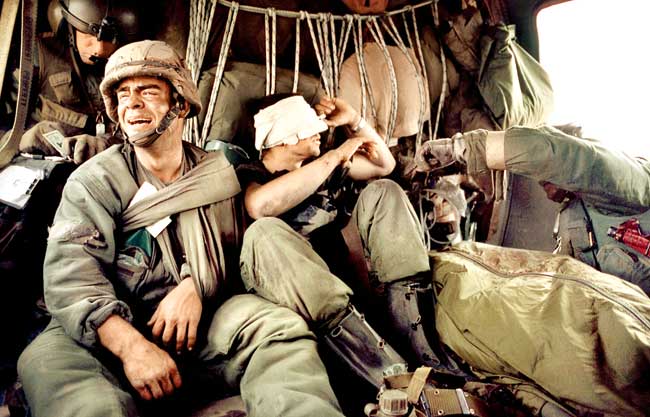
In one of Turnley's most popular pictures of the Persian Gulf War, an American soldier breaks down in an evacuation helicopter after hearing that his friend, the driver of his Bradley Fighting Vehicle, was killed in a "friendly fire" incident that he himself survived. The soldiers were exposed to depleted uranium as a result of the explosion. They and the body of the dead man are on their way to a Mobile Army Surgical Hospital. Pic/1991, David Turnley, World Press Photo of the Year
Other assignments quickly followed. At the Tiananmen Square protests of 1989 in Beijing — which international journalists were banned from covering — Turnley was perhaps one of the few photographers who managed to capture the event.
"I remember feeling very curious as I could not see other photographers at the scene. I didn't know this at that time, but the Chinese government had declared that photographers seen covering the protest would be arrested or even shot. I continued to work and later my main concern was getting the film out of the country," he says.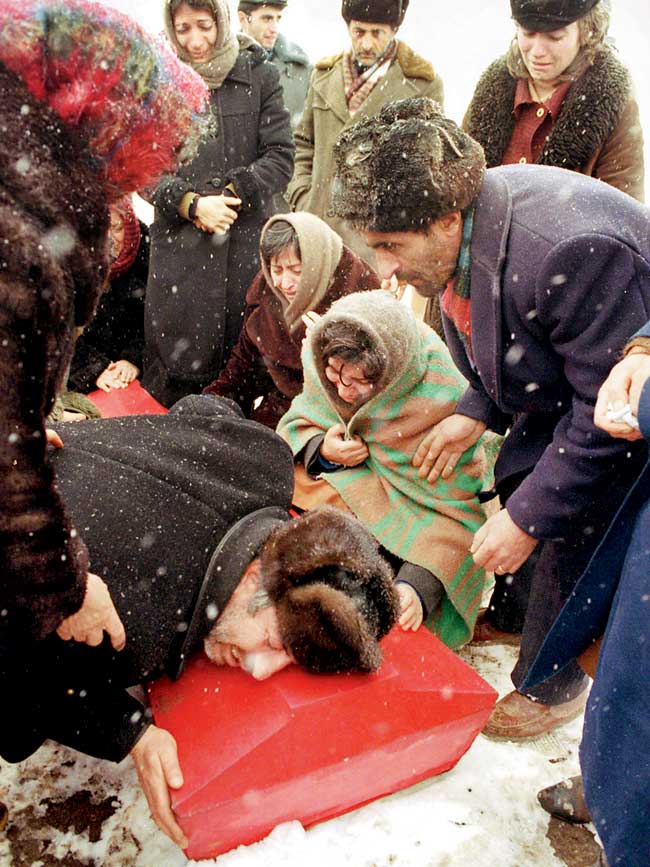
Family members grieve around the coffin of a child killed in an earthquake that shattered Armenia in December 1988. More than 25,000 people died in the quake. Pic/1988, David Turnley, World Press Photo of the Year
He describes the late '80s and the early '90s — which was also the time the Soviet Union collapsed, as did the Berlin Wall during revolutions in Europe — as a "euphoric time", when he constantly found himself in the midst of historical change.
"It felt a bit like living in John Lennon's song Imagine on a daily basis," he says. "It was an enormous privilege and I knew that I had to do my humble best with as much dignity as possible. I wanted to do whatever I could, as well as I could," adds Turnley.
In Delhi and Dharamsala
Turnley says that post-traumatic stress disorder was probably a concept unknown to photographers of his generation — it certainly was to him. Still, therapy, unexpectedly, came in the form of a short stay at Dharamsala while directing the Emmy-nominated film The Dalai Lama: At Home and in Exile, for CNN, during which he stayed with the Dalai Lama. "I don't think I was aware of an intention (to seek therapy from the visit).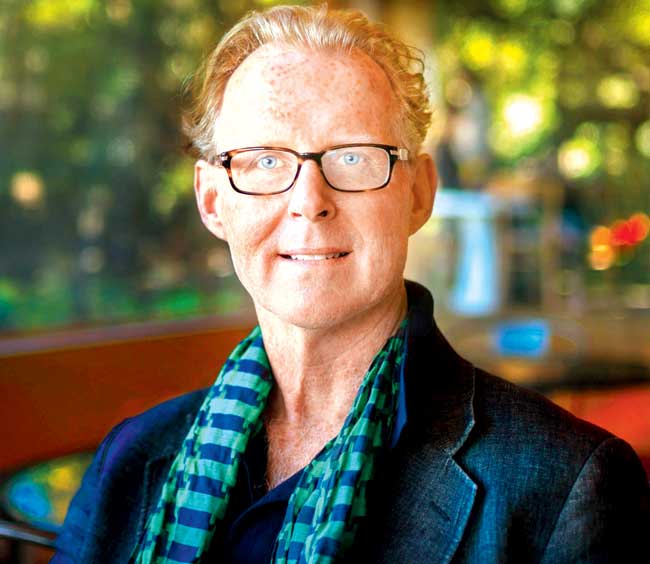
David Turnley
But it was incredibly therapeutic," he remembers. India, however, was not new to him then. He had been to Delhi earlier in 1984 to photograph Indira Gandhi's funeral. "I remember how Rajiv (Gandhi) circled the body and touched her lips with the flame for cremation. I remember the smell of the fumes and the sandalwood. I was so touched by it," he adds.
Talking about his trip to Goa for the festival till February 21 — where he is a participant — Turnley says he would love to catch up on works by Indian photographers. "It is a glorious time to be a photographer as you have greater accessibility to the world and a larger audience via the Internet. Photography is a powerful voice to say what we feel," he concludes.
 Subscribe today by clicking the link and stay updated with the latest news!" Click here!
Subscribe today by clicking the link and stay updated with the latest news!" Click here!






